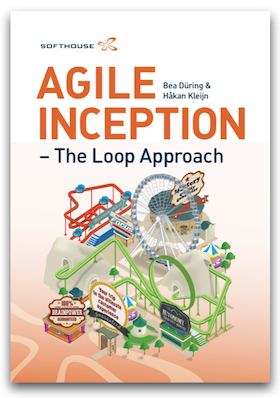Recently, Pomodoro Technique has become increasingly popular among software developers in the Lean and Agile communities. Kristoffer Nordström from Softhouse, made for Lean Magazine this interview with Staffan Nöteberg – the author behind the bestseller Pomodoro Technique Illustrated.
 What is Pomodoro in short?
What is Pomodoro in short?
Pomodoro Technique is a process for individual time management. It’s based on Lean concepts like stop-the-line, justin-time and plan-do-check-act. You can think of it as Scrum, scaled down to one person – including adaptive planning, iterations, retrospectives etc. It’ll also give you strategies for estimating, handling interruptions and focusing. And the only tools you need are a kitchen timer, three sheets of paper and a pencil. It’s very simple, but still surprisingly powerful.
Who is the intended target for Pomodoro?
Anyone who works in an office will benefit from Pomodoro Technique. That is unless you only have 100% event-driven activities like answering the phone in a help desk.
Is it a personal way of working or is it applicable on a team level?
Pomodoro Technique is intended for one person, but it’s applicable for any workgroup, e.g. two persons that are pair programming or people in a meeting. I also want to stress that Pomodoro Technique, by no means, impedes collaboration in the team.
What is the biggest differences between Pomodoro and Scrum, apart from the scope and the length of the “Pomodoros”/Sprints?
Scrum is focused on a team’s achievements, Pomodoro Technique is about the individual’s achievements. Actually, Pomodoro Technique fits perfectly inside Scrum. You bring some activities from the scrum board back to your desk and then start with your Pomodoro.
What would you see as the biggest advantages in working with Pomodoro?
Pomodoro Technique gets you started. Neither boring tasks, nor complex tasks will drive you to sub activities – like pick up another cup of coffee, throw one more glance at a funny web page or play another round of Tetris – anymore. It will also make sure that you do the most important activity all the time. It’s very easy to get bogged down in details of one activity, when you should look around and figure out that another activity is in urgent need to be done.
What contexts is there where it isn’t suitable to adopt Pomodoro?
If you’re not allowed to plan anything, everything is event-driven and you never have more than one possible activity to focus on – then Pomodoro Technique is waste. But even if part of your day have those traits, you can still use Pomodoro Technique for the other parts.
What are the weaknesses of Pomodoro?
One weakness is that Pomodoro Technique doesn’t handle things that you need to do on a regular basis, but that are never the most important thing right now, e.g. cleaning your desk. However, since Pomodoro Technique is an adaptive process, you should get rid of anything that you believe is waste. You start by the book (Pomodoro Technique Illustrated) and then evolve the process every day to be suitable for you particular circumstances. All offices, all projects and all people are different and hence needs their own process.

Is it possible to work like this for a long time since it seems to be very mentally exhausting for an individual to always work this intensively?
It’s true that Pomodoro Technique makes you extremely productive and focused. But, to have a sustainable pace is very important in Pomodoro Technique. If you get exhausted, then you should adapt your process. Take a 30 minute walk every fourth break or eat more fruit and drink less coffee for example.
Could you name a few typical metrics to evaluate after each Pomodoro?
You should measure any experiment you make to improve your process, like Deming’s Plan-Do-Check-Act. If you find that you’re often interrupted, then record the type and number of interruptions. You’d be surprised how many times you stop doing what you were supposed to do and instead check your emails. If activities take longer time than you think, then record how many times you had to re-estimate. The first and most basic metric is the number of Pomodori (25 minute iterations) you complete every day.
How does the current development of Pomodoro look since it has been around since the eighties?
Pomodoro Technique attained a wider interest in the world, when Pragmatic Bookshelf published my book Pomodoro Technique Illustrated in 2009. Especially the translations in Chinese, Japanese and Korean are very popular. Most major software development and agile conferences had talks on Pomodoro. There’s also a discussion list at Google Groups with many interesting stories and tips from the community.


